
Great Lakes: Lack of ice, high water levels will have spring consequences
An ice-free framework over the Great Lakes means more lake-effect snow than what is typical for the end of February.
Two peculiar events are developing before our eyes across the Great Lakes. A rare combination of unusually high water levels, paired with a pronounced lack of ice cover has created interesting dynamics, that'll have consequences spilling into spring.
First the water levels.
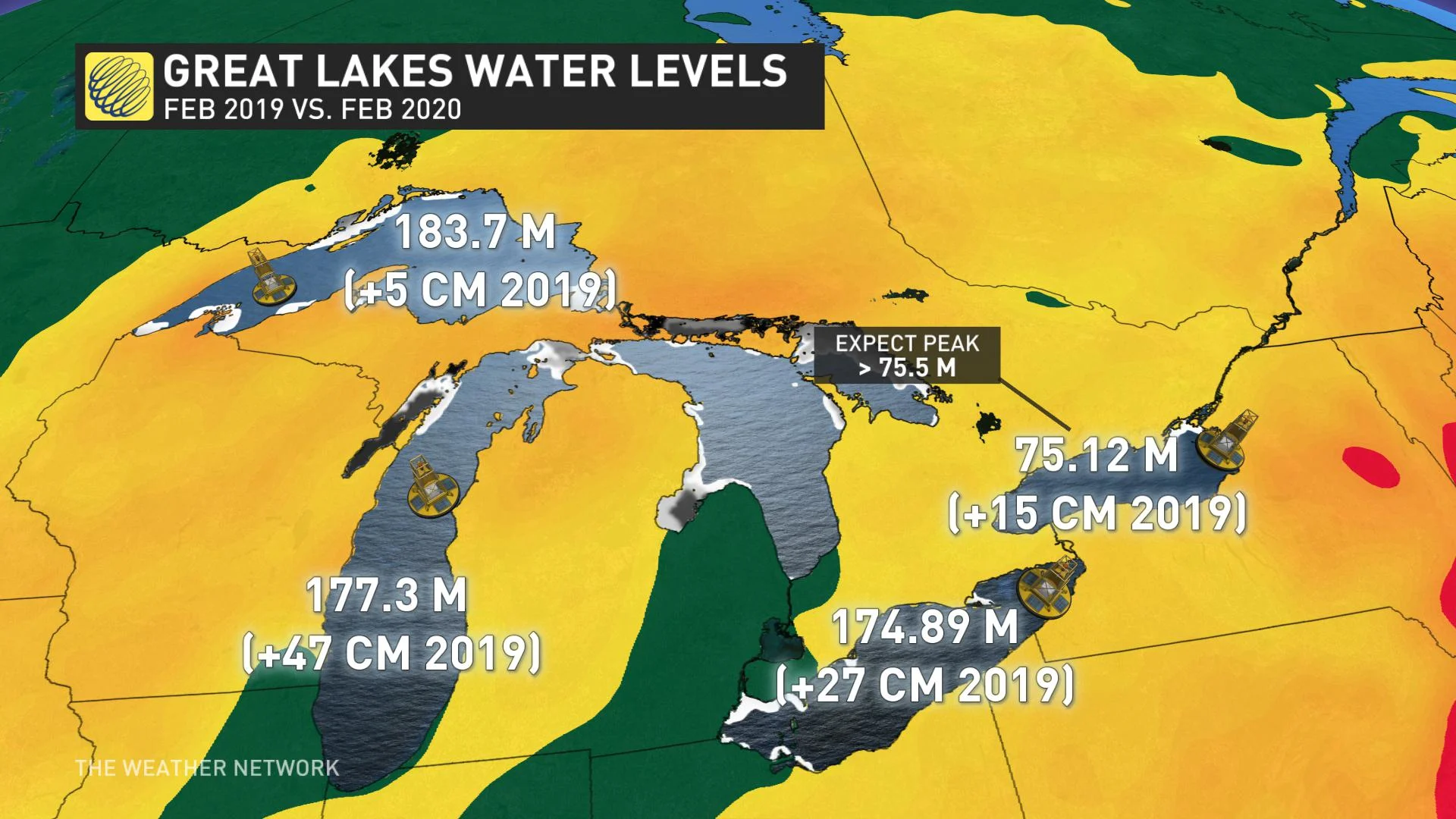
After a significant and prolonged flooding season across numerous Great Lakes in 2019, the trends that are starting to emerge in 2020 are disconcerting.
According to NOAA, Lake Superior and Lake Michigan both set all-time water level records for January, with Lake Michigan nearly half a metre higher than this time last year.
SKY HIGH WATER LEVELS
After 150-200 per cent of the normal precipitation fell across the Great Lakes Basin in January, water levels surged upwards and brought Toronto within millimeters of it's all-time January rainfall record.
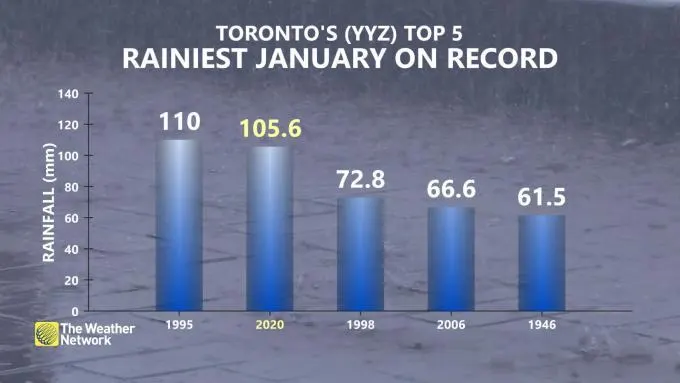
SPRING WEATHER THE MAIN WILD CARD
There are lots of factors at play for potential spring flooding, but a wet spring would be a worst-case scenario – as the lakes don't have to see the same magnitude increase than what was observed in 2019 to reach similar water levels.
The Ottawa River and flooding in Montreal will be watched closely; that can limit the amount of water drained through the Moses-Saunder dam down the St. Lawrence.
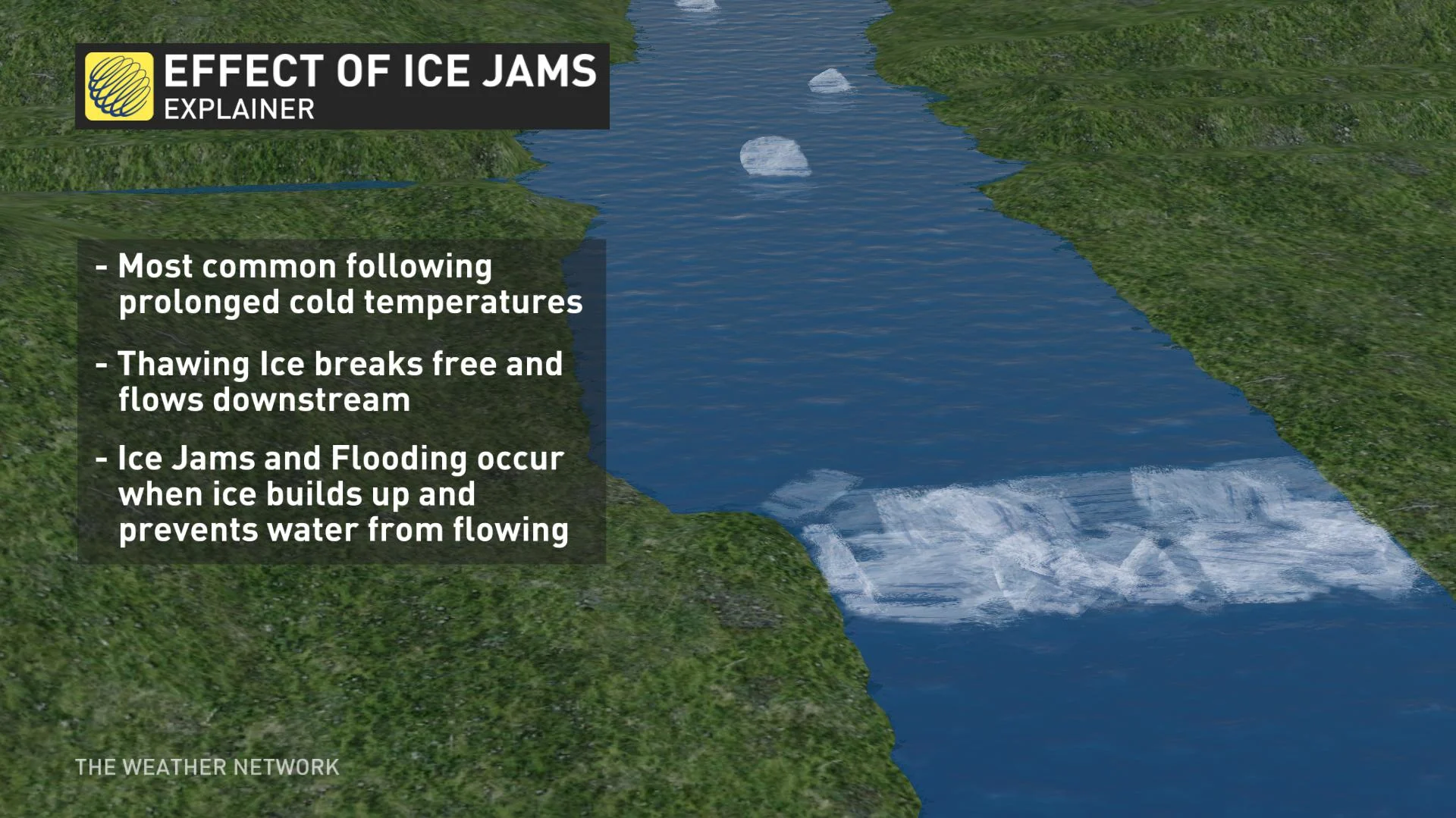
Another noteworthy wildcard would be the threat of ice jams along the St. Lawrence Seaway. These quick freeze-ups require decisive and swift action to prevent significant flooding. Lowering Lake Ontario outflows is often a preventative and required response to these events.
WHERE'S THE ICE?
If you thought the water level anomalies were quite extreme, the ice-free activity being observed in Lake Erie is also quite unique for February.
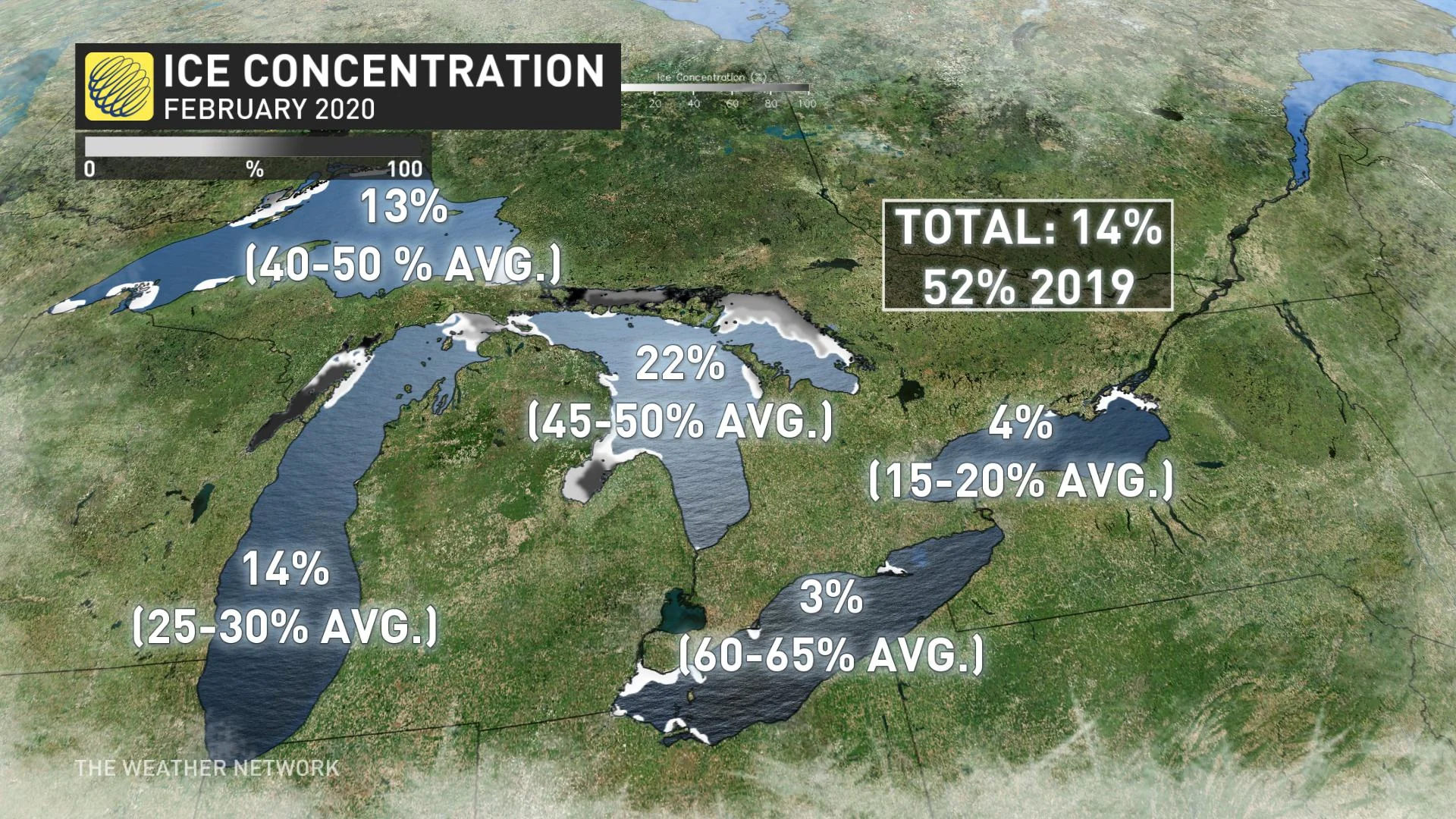
At this time last year, over 50 per cent of the Great Lakes surface area had ice cover. February 2020 is currently hovering between 10-15 per cent through February. While Lake Ontario maintains limited ice cover because of its depth, Lake Erie doesn't have that same excuse.
LAKE ERIE ICE HAS FLATLINED
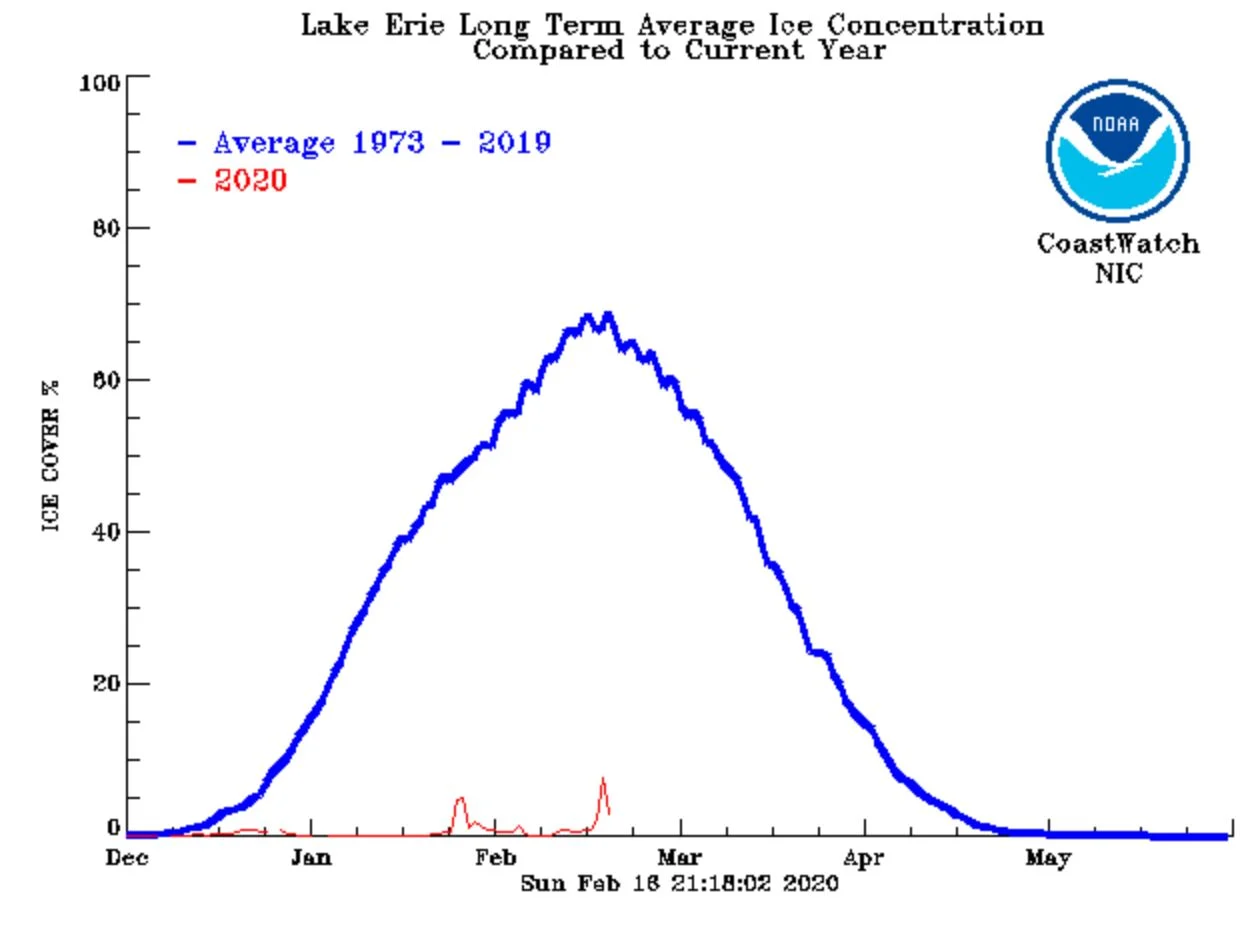
As displayed on the graph above, an average (1973-2019) long term ice concentration value for early February is over 60 percent for Lake Erie. With the exception of a couple of pitiful attempts at increased ice cover, 3 per cent ice cover for the normally icy lake is quite an outlier.
A consequence of the ice-free framework in place for February means more lake-effect snow than what is typical for the end of winter. That is if cold air decides to make an appearance across the region. The occasionally cold day or two across the Great Lakes can be anticipated through the end of February – no sustained cold air in sight.






